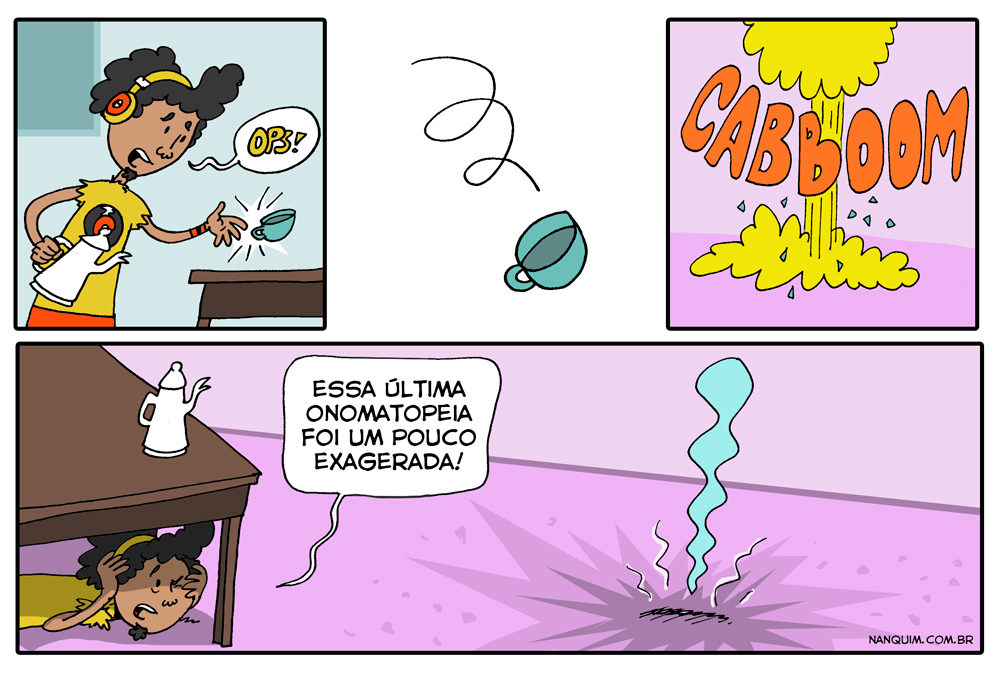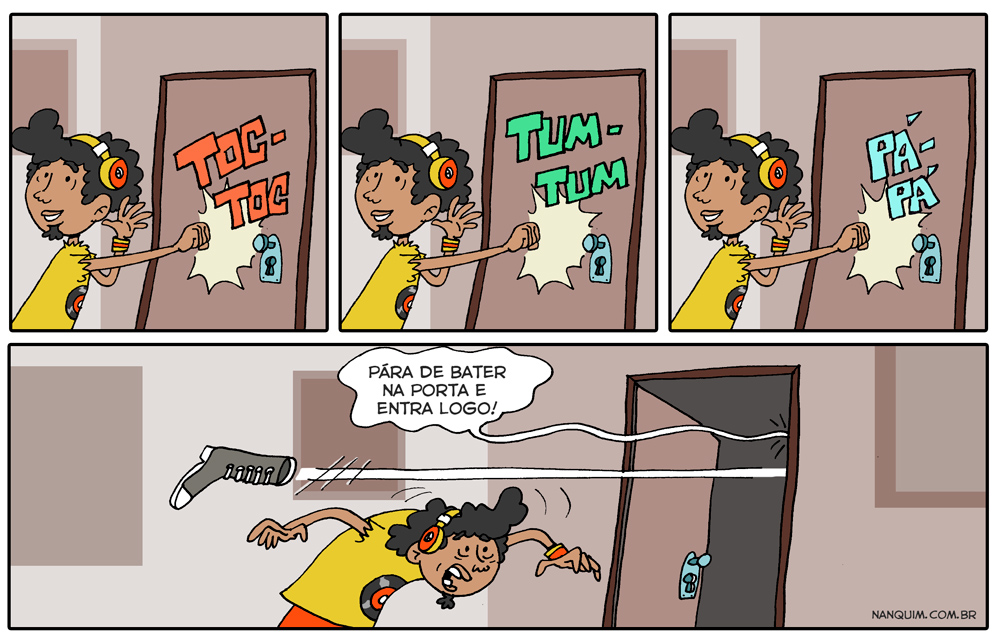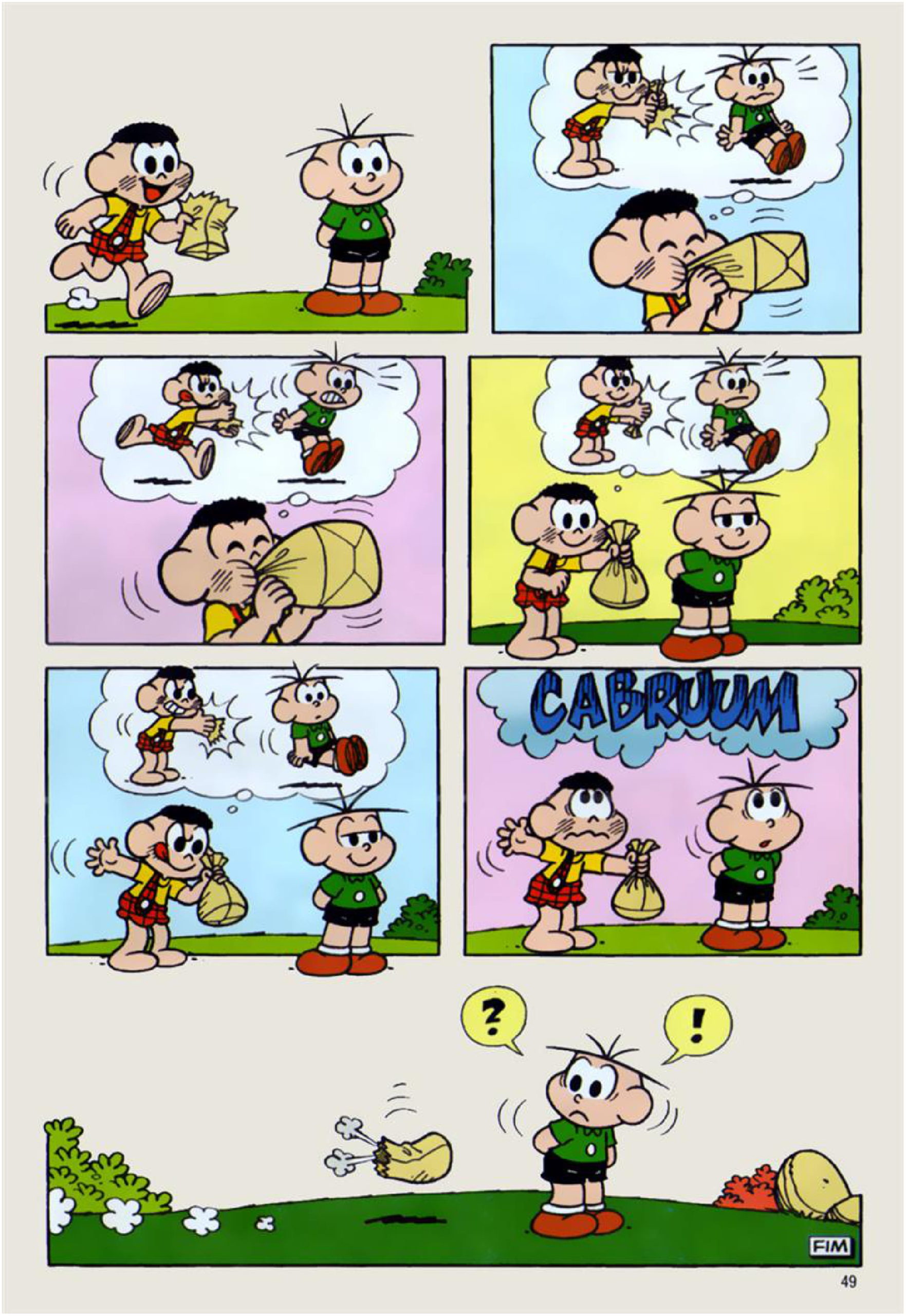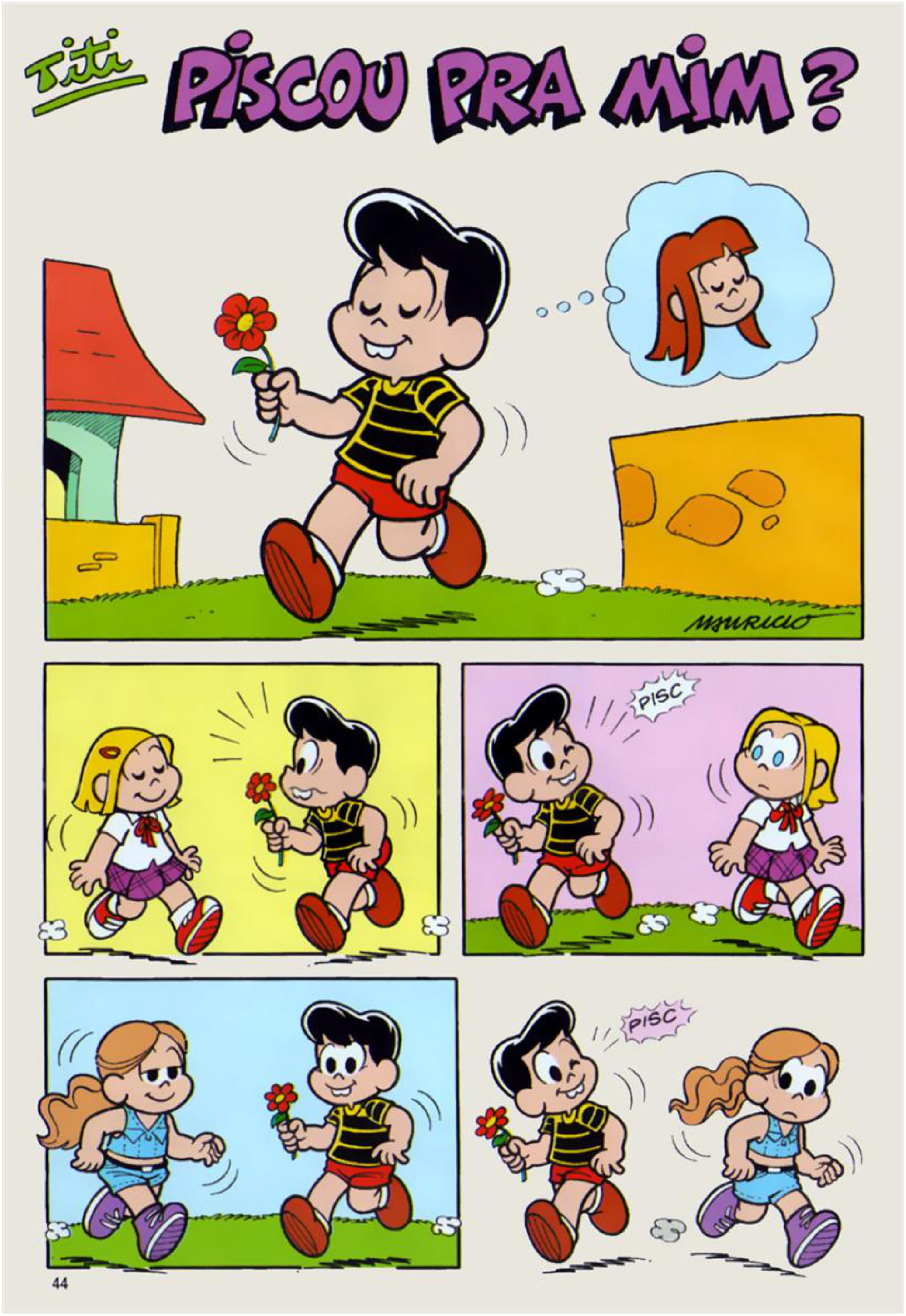
Onomatopeia
Onomatopoeia is a figure of speech in which words evoke the actual sound of the thing they refer to or describe. The "boom" of a firework exploding, the "tick tock" of a clock, and the "ding dong" of a doorbell are all examples of onomatopoeia. Onomatopoeia can use real words, made-up words, or just letters used to represent raw.

Tirinhas 3 onomatopeia
Almost exclusively associated with liquid, "splash" is one of the most common onomatopoeia words. "Little Timmy's cannonball made a giant splash !" is one way to use this word; "Little.

StyleGuide Turma da Mônica Onomatopeias on Behance
100+ Onomatopoeia Examples To Spice Up Student Writing. Use these words to add some zip, zing, and pizazz! Onomatopoeia is a long word with a very simple definition: It describes words that imitate a sound. (It's pronounced ah-nuh-mah-tuh-PEE-ah.) These are words we all use all the time, and when you really start to look, you'll find.

Onomatopeia
Best Examples of Onomatopoeia. Bash - hit hard. Belch - expel gas from the stomach. Chirp - a sharp sound made by small birds or insects. Ding-dong - the noise made by a bell. Giggle - laugh nervously. Hum - sing with closed lips. Hiccup - a spasm of the diaphragm that produces a sound. Toot - a blast of a horn.

2º ANO SEQUÊNCIA DIDÁTICA ONOMATOPEIA E HISTÓRIAS EM QUADRINHOS
Onomatopoeia is a literary device in which a word emulates a certain sound. Examples include ruff for a dog's bark, the tick-tock of a clock, the ding-dong of a bell, a crackling fire, or the bang of a starter pistol. All of these onomatopoeic words sound like what they mean when you say them out loud. The word "onomatopoeia" comes from.

Tirinhas 3 Onomatopeia
An onomatopoeia is a figurative language (and within that a device of sound) that uses word whose pronunciation imitates or suggests the sound the word describes. It makes your writing expressive through use of sound of words. For example, buzz, when spoken, imitates the sound of a flying insect. To take another example, ding-dong, when spoken.

Tirinhas 3 onomatopeia
The word "onomatopoeia" itself contains clues to its own meaning. It's derived from the Greek words "onoma" meaning name and "poiein" meaning to make. So onomatopoeia literally means "to make a name for a sound.". True to its own terminology, the word uses phonemes like the "p", "t", and "p" to sound like what it.

2º ANO SEQUÊNCIA DIDÁTICA ONOMATOPEIA E HISTÓRIAS EM QUADRINHOS
55 Examples of Onomatopoeia. 1. Gulp. The soccer team couldn't stop gulping water after their game. 2. Gargle. After brushing her teeth, Sydney gargled with mouthwash. 3. Sizzle.

2º ANO SEQUÊNCIA DIDÁTICA ONOMATOPEIA E HISTÓRIAS EM QUADRINHOS
Onomatopoeia [note 1] is the use or creation of a word that phonetically imitates, resembles, or suggests the sound that it describes. Such a word itself is also called an onomatopoeia. Common onomatopoeias include animal noises such as oink, meow (or miaow ), roar, and chirp. Onomatopoeia can differ by language: it conforms to some extent to.

2º ANO SEQUÊNCIA DIDÁTICA ONOMATOPEIA E HISTÓRIAS EM QUADRINHOS
First, provide the students with a photocopy of a story (or extract) suitable for their age and ability. Then, instruct the students to go through it word by word, highlighting the nouns as they go. When they've completed this, tell the students to select 5 nouns (or another suitable number) to convert into onomatopoeia.

Historias Em Quadrinhos Com Onomatopeias Da Turma Da Monica EDUCA
O nomatopoeia, pronounced ah-nuh-mah-tuh-PEE-uh, refers to the practice of naming something based on a phonetic (spoken) imitation of a sound associated with it. It can also refer to a single word of this kind: Hiss is an onomatopoeia. Buzz, chirp, and honk are all also examples of onomatopoeia. As with so many other words in the English.

Lais, Lylian e Irabelly TIC Onomatopeia
Common Examples of Onomatopoeia. The buzzing bee flew away. The sack fell into the river with a splash. The books fell on the table with a loud thump. He looked at the roaring. The rustling leaves kept me awake. The different sounds of animals are also considered as examples of onomatopoeia.

2º ANO SEQUÊNCIA DIDÁTICA ONOMATOPEIA E HISTÓRIAS EM QUADRINHOS
Onomatopoeia is a word which mimics the sound it represents. Unlike most words whose connection to the meanings they represent is abstract, onomatopoeias have a direct connection to the words they represent. Onomatopoeias are used in poetry, comic books, advertising,… -huge-list-of-onomatopoeia-examples/">Read more →

StyleGuide Turma da Mônica Onomatopeias on Behance
Onomatopoeia is the use of words that imitate the sounds associated with the objects or actions they refer to (such as hiss or murmur ). It can also include made-up words or simply a series of letters, such as zzzzzz to represent a person sleeping or snoring. The adjective is onomatopoeic or onomatopoetic.

ARTEEDUCAÇÃO Onomatopeia nas Histórias em Quadrinhos (HQ)
In your writing, let all your animals play a part. Give them a voice. Make them bark, bleat, croak, chirp, neigh, hiss and meow. Make little feet pitter-patter across the floor. Let horns honk, beep and boom. Toys rattle, crash, jingle and jangle. Here are 11 onomatopoeia words with comic-like illustrations!

Pin em Tirinhas
Onomatopoeia, just like other sound devices (e.g., alliteration or assonance), is used in literature to engage with the reader's auditory sense and enhance their overall reading experience.Writers use onomatopoeia for various reasons: Vividness: Onomatopoeia brings descriptions to life and helps readers better visualize the action and hear the sounds within a narrative.